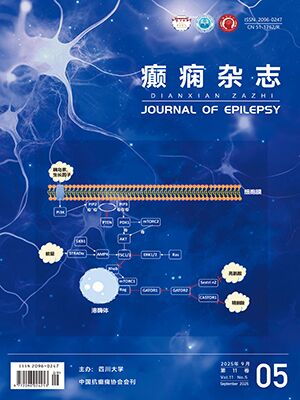| 1. |
Rusu V, Chassoux F, Landre E, et al. Dystonic posturing in seizures of mesial temporal origin. Neurology, 2005, 65(10): 1612-1619.
|
| 2. |
Morecraft RJ, Stilwell-Morecraft KS, Ge J, et al. Cytoarchitecture and Cortical Connections of the Anterior Insula and Adjacent Frontal Motor Fields in the Rhesus Monkey. Brain Res Bull, 2015, 119(Pt A): 52-72.
|
| 3. |
Pandya D, Petrides M, et al. Cerebral cortex: Architecture, Connections, and the Dual Origin Concept. Oxford University Press 2015: P156.
|
| 4. |
Amuts k, Schleicher A, Burgel U, et al. Broca’s region revisited: cytoarchitecture and intersubject variability. J Comp Neurol, 1999, 412(2): 319-341.
|
| 5. |
Amunts K, Lenzen M, et al. Broca’s Region: Novel Organizational Principles and Multiple Receptor Mapping. PLoS Biology, 2010;8(9): e1000489.
|
| 6. |
Stephanie B. Genetic advances in autosomal dominant focal epilepsies: focus on DEPDC5. Prog Brian Res, 2014, 213: 123-139.
|
| 7. |
Baldassari S, Licchetta L, Tinuper P, et al. GATOR1 complex: the common genetic actor in focal epilepsies. J Med Genet, 2016, 53(8): 503-510.
|
| 8. |
Dibbens LM, de Vries B, Donatello S, et al. Mutations in DEPDC5 cause familial focal epilepsy with variable foci. Nat Genet, 2013, 45(5): 546-551.
|
| 9. |
Baulac S, Ishida S, Marsan E, et al. Familial focal epilepsy with focal cortical dysplasia due to DEPDC5 mutations. Ann Neurol, 2015, 77(4): 675-683.
|
| 10. |
Scheffer IE, Heron SE, Regan BM, et al. Mutations in mammalian target of rapamycin regulator DEPDC5 cause focal epilepsy with brain malformations. Ann Neurol, 2014, 75(5): 782-787.
|
| 11. |
Scerri T, Riseley JR, Gillies G, et al. Familial cortical dysplasia type IIA caused by a germline mutation in DEPDC5. Ann Clin Transl Neurol, 2015; 2(5): 575-580.
|
| 12. |
桑林, 胡文瀚, 刘畅, 等. DEPDC5 基因突变相关局灶性皮质发育不良并发癫痫手术治疗 1 例并文献复习. 疑难病杂志, 2017, 16(2): 141-143.
|
| 13. |
欧阳梅, 李花, 等. DEPDC5 基因突变的遗传性局灶性癫痫的临床研究.癫痫杂志, 2018, 4(3): 192-200.
|




